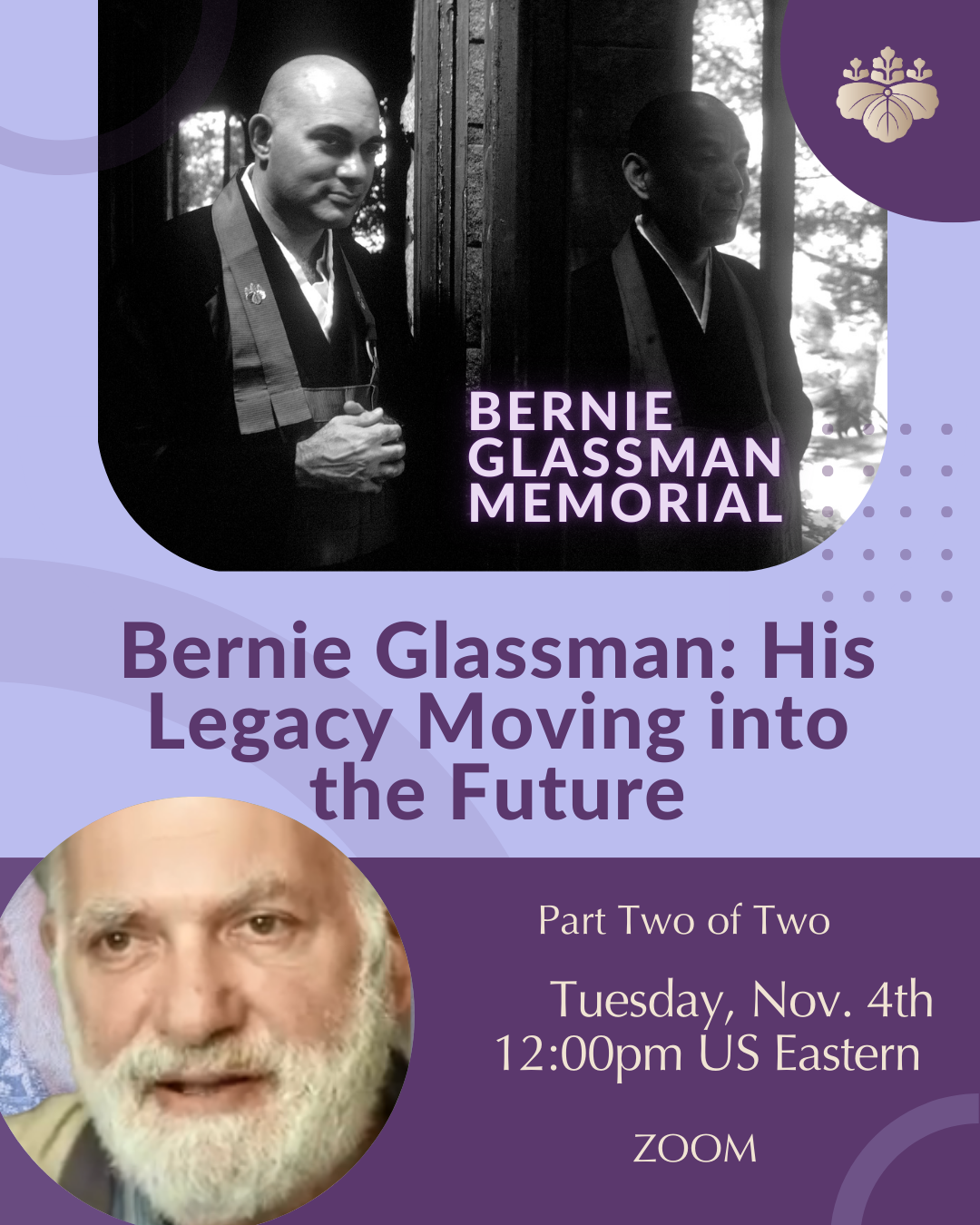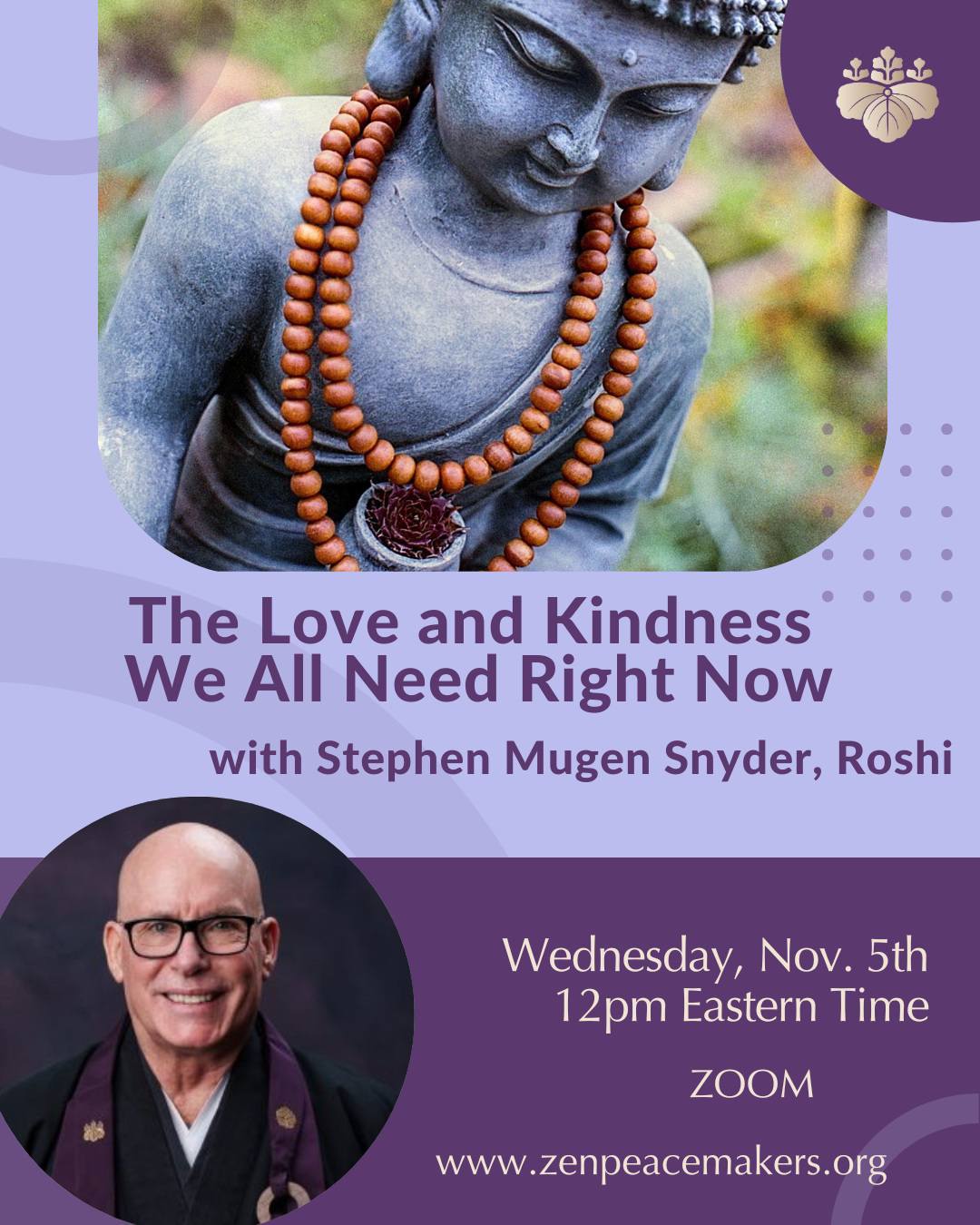I read a lot of science fiction when I was younger. I haven’t read that much recently, but there’s a few thoughts that have stuck with me all these years. One was “groking.” Grok was a word that was coined by Robert Heinlein, in a book he wrote in 1961—a science fiction novel called Stranger in a Strange Land. And in the book it’s defined as “grok,” meaning to understand so thoroughly that the observer becomes part of the observed—to merge, blend, lose identity in group experience. It’s hard to really grasp it. It’s sort of like a blind man grasping color. But, it can be experienced.
So I use “grok” a lot to explain what I mean by bearing witness. Of course then you’ve got to explain grok. So, in bearing witness I say that that’s a state in which the observer and the observed disappear, and it’s just the experience itself. That is, there’s no subject/object relationship. So bearing witness is to grok—to really become one with the situation.
Koan study in Zen was developed to help us experience this bearing witness. That is, there are many koans that the only way to answer them is to become all of the entities in the koan, and show the teacher—or the one you are meeting in the koan study—that you have become that. If you give commentary on that, that doesn’t work. That’s a subject/object relationship. Even if the commentary sounds right, it doesn’t matter. The koan study is aiming for you to experience that situation when the observer and the observed are gone, and it’s just the thing itself. So that’s “grok.”
Another book—actually a series of books—that I loved was Isaac Asimov’s The Foundation. That’s a series I think of five or six books. But in it, there’s a man, Hari Seldon, who comes to the conclusion that the universe—which was large, and many planets, different galaxies, and there was somebody overseeing the whole thing—but anyway, he came to the conclusion that it was going to end in chaos. And he worked out a way to predict—at least statistically—how things would flow. And he came up with a way to improve the probability that a stabile universe could occur sooner, if there were some interventions. Without interventions, maybe the whole thing would have gone total chaos in let’s say a billion years—I don’t know, a hundred million years. With some interventions, he felt he could lengthen the time by which after the galaxies went chaotic— that they could regain stability. And to do that, Hari creates two different Foundations—a Foundation and a Second Foundation. And the Second Foundation, nobody knows where it is. Nobody knows anything about it. He keeps that secret.
The First Foundation grows. And it’s very scientific, and it’s based on knowledge. And it goes the way that we’ve seen our planet go. A merchant class arises and takes over. And an information class arises and takes over. And the scientists arise and take over. That sort of repeats the cycle that we understand. And it’s based on knowledge. And it has a limited lifetime, because it has an inherent flaw. And the inherent flaw is that it is based on knowledge.
The Second Foundation are folks that can grok Indra’s net. They can grok the interconnectedness of life. They can grok the whole thing in a way where they’re not observing the whole thing, but they are part of it. And they can feel and understand the wholeness of the universe—of the world. And as the First Foundation gets into troubles, the Second Foundation groks the situation. And by bearing witness to that situation, comes up with loving actions, which are permutations to move the First Foundation back into some stability.
Sounds familiar for those that know about the Zen Peacemakers, and the three tenets of not knowing, bearing witness, and loving actions.



Awesome! Sign me up!!! Awesome!